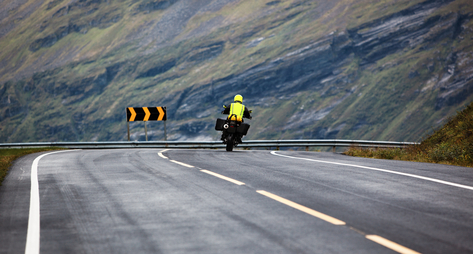 In 1989, motorcyclists and Vietnam veterans James Gregory and Bill Evans set out on a two-wheeled mission across America to raise awareness about the “thousands of men and women [in the armed forces] still unaccounted for from all of our wars.” Now called Run for the Wall, the tradition continues this May and organizers expect to attract 350,000 participants who will join the cause on a 10-day ride to the Vietnam Memorial Wall in Washington DC, stopping at schools, memorial sites and Veteran’s hospitals along the way.
In 1989, motorcyclists and Vietnam veterans James Gregory and Bill Evans set out on a two-wheeled mission across America to raise awareness about the “thousands of men and women [in the armed forces] still unaccounted for from all of our wars.” Now called Run for the Wall, the tradition continues this May and organizers expect to attract 350,000 participants who will join the cause on a 10-day ride to the Vietnam Memorial Wall in Washington DC, stopping at schools, memorial sites and Veteran’s hospitals along the way.
If you’ve been on a long road trip, you know the basics of what to expect. But this event is not your typical road trip, to say the least. For riders joining for the first time, there are some things to know before setting out on your two-wheeled, cross country journey:
Luggage rack > Backpack
Just because you can’t pack a suitcase on a motorcycle doesn’t mean you don’t have luggage options. But a backpack will never be one of them, at least not on long-distance runs. According to the experts at OpenRoadJourney backpacks to motorcyclists are “shoulder pinching, posture ruining, loud wind-flapping-ear-drum-popper at speed back attachment you wish you’d never brought.” Instead, they suggest heading to a motorcycle store to invest in a luggage rack that mounts on the back of the bike and can be used to secure a small to medium-sized duffel bag behind the rider. You should also look into purchasing saddlebags for extra storage space.
Everything you need
Safety gear is first and foremost. As a rider, you should already own leathers, gloves and a helmet (and wear them always), but when it comes to everything else, packing light is key. Guy Boutin of BamaRider.com says of packing, “Weight = drag and it will dog you the entire tour if you have too much. I only bring stuff I’m going to use, and use often.” Clothing must be kept light, but remember to prepare for inclement weather. RFTW is in May, so the chances you’ll run into a blizzard are slim, but it is highly likely you’ll get a bit of rain at some point. Water resistant gloves and boot covers are a must, as are rain jacket and pants.
The rest of your bare necessities include:
- Motorcycle (you’d be surprised)
- Water bottle or hydration pack
- Toiletries (including toilet paper)
- Emergency gear (tools, parts, oil)
- Wind glasses, sunglasses
- Sunblock
- First aid supplies
- Road maps
- Cash
- Emergency contact information
- Items you want to leave at the Wall
From there, the items you pack are at your discretion. If you forget something, that’s where cash comes in handy. RFTW organizers stress participants should never assume that another rider will be willing to loan gear or supplies. They came prepared, and if you didn’t, you might find yourself up Route-66 without a paddle.
Richard Evans – Motorcyclist, attorney, father



